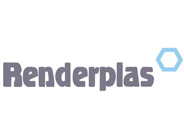Renderplas has launched two new PVCu plasterers’ beads which make it quick and easy to create neat ‘shadow gaps’ at plaster edges for a contemporary interior design effect. The new Shadow Gap profiles from Renderplas allow controlled gaps between 10mm and 20mm to be formed, for example, around door frames or where a plastered wall meets a ceiling or finished floor. These new additions to the Renderplas range are available in a choice of L profile - for use where the adjacent material is designed to be seen; or U profile to ensure a neat channel with perfect parallel lines adjacent to surfaces such as un-edged plasterboard.
Shadow gaps can provide the perfect finishing touch to a minimalist interior. They are a popular design feature with many architects and interior designers but are often regarded as tricky and time consuming by plasterers. The new Shadow Gap profiles from Renderplas offer a simple and less labour-intensive way to get these gaps exactly right - saving time and effort on site. The U profile provides a gap of 15mm, while the L profile can be used to create a gap up to 20mm. The L profile is scored every 5mm along its hidden face so it can easily be trimmed with a sharp knife to form a 10mm or 15mm gap to suit different design requirements. Each Renderplas Shadow Gap profile is 15mm deep, which is the preferred depth for this application and ideal for normal lighting conditions.
Shadow Gaps are fashionable features for modern interiors and are often specified in place of skirting boards or architrave. In addition to the more traditional type of shadow gap at the top or base of a plastered wall, Renderplas Shadow Gap profiles offer a simple solution to forming a variety of interior design effects, says Daniel Leedham-Green, Managing Director of Renderplas. “For example, they can provide a shadow gap above a skirting board or a clean channel mid-wall in which a rope light can be inserted. With our new PVCu profiles these small features are no longer a big challenge for plasterers.”
Renderplas makes Shadow Gaps simpler with new PVCu profiles
| T | 01299 888333 |
|---|---|
| F | 01299 888234 |
| E | enquiry@renderplas.co.uk |
| W | Visit Renderplas's website |
| Number 2, 70-72 High Street, Bewdley, DY12 2DJ |
Products by this Company






